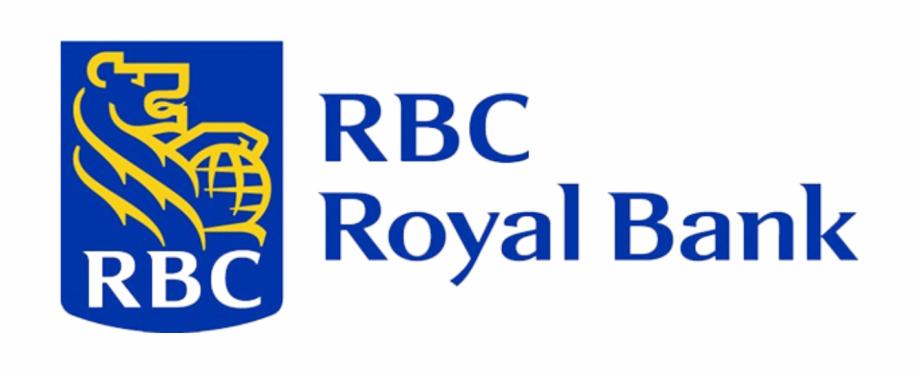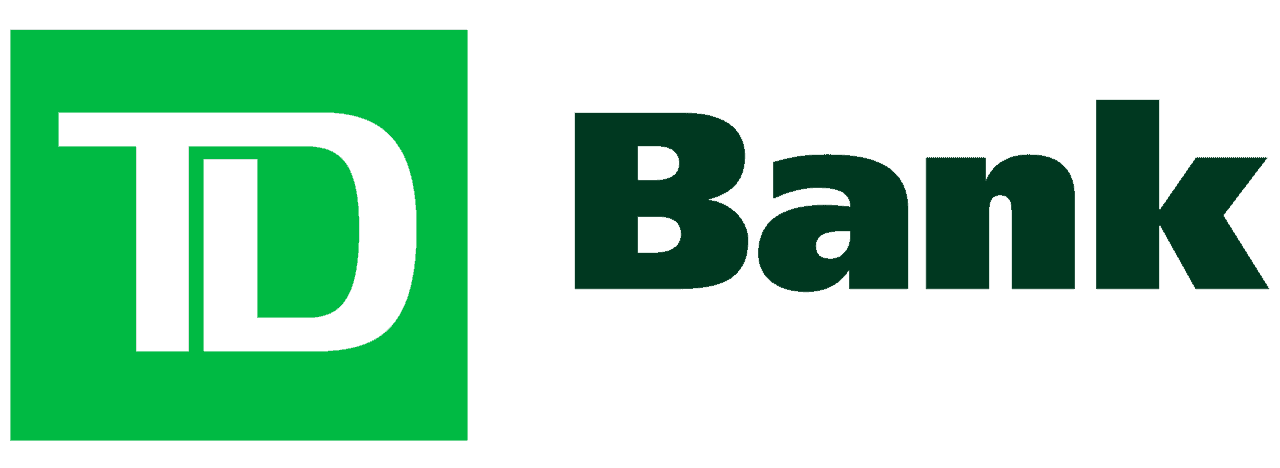Lured by the appeal of making big money, the stock market has always been a magnet for investors and high net worth individuals. Discouraged by the impossibly low interest rates attached to typical High Street bank savings accounts, investors turn to the stock market as a more reliable and robust revenue stream.
But as there is no such thing as a 100% safe haven for investors, a carefully balanced wealth management strategy is essential. While some Canadian investors target rapid returns, others are more about playing the long game. For those in the latter bracket, seeking the top Canadian blue-chip stocks for the best possible long-term dividend yields is the priority. Of course, it doesn’t mean you shouldn’t invest in the best Canadian stocks to buy right now, as explained here.
Arguably, one of the best things about Canadian dividend stocks investment strategies is the fact that they are flexible. If you find yourself in the midst of an investment strategy that suits neither your risk appetite nor your cash flow situation, you can make changes to it. Nevertheless, doing so can be costly, given that every purchase carries a fee.
Our recommendation:

10 Best Blue Chip Canadian Stocks to Hold Forever
Once again, the term ‘reliable’ needs to be taken with a pinch of salt in this instance. There are no guarantees on the stock market in Canada – there are always risks to factor in. On the other hand, these ETFs are probably the ones you should hold on to in the long run.
Nevertheless, we have selected the following Canadian dividend stocks on the basis of several important factors:
• Their dividend payout consistency
• Their dividend yield growth rate
• Their history of quality products and services
• Their reputation as a reliable growth stocks
Of course, the idea with ‘forever’ dividend stocks is that you hold on to them long-term. This will inevitably mean an annual (or five-yearly) dividend yield that varies over the course of time.
But what has made the following Canadian dividend stocks so popular is their reliability on a true longer-term basis. They’re not the stocks in Canada to dive into for building an overnight fortune but could well form the basis of a superior permanent portfolio (see also Power Corporation of Canada).
And just to emphasize one important point ahead of time – the following stocks for investors in Canada are listed in no particular order.
1. Fortis Inc (FTS)
A top Canadian gas and electric utility company, Fortis Inc also has an established presence across North America and in the Caribbean. They have been doing what they do for more than 130 years, building a near-faultless reputation and track record along the way.

They’ve also proved a highly reliable haven for long-term investors, paying dividends to shareholders for almost 50 years. The company announced a dividend increase of 6.1 per cent in September 2019, taking its Waterloo dividends to a new high of just under 48¢. This equated to an annualized per-share dividend of $1.91 for the year 2000.
Over the course of the past decade, annual dividend payments from Fortis Inc have grown from $1.12 in 2010 to $1.92 in 2020. This equates to average annual per-share dividend growth of 5.8 per cent during this period of time.
Investors making Fortis Inc their core holding for longer-term returns have been generating significant profits over the years. In this instance, an investment of $10,000 25 years ago would have resulted in total returns of around $217,500 – an impressive 2,076% return. This equates to annual total returns of 13.0% on average over the course of the past 25 years.
It’s the established and reputable nature of Fortis Inc that has made it such a popular choice for investors seeking longer-term growth stocks. Reliable dividend income, a robust reputation and around 50 years of paying generous dividends all add up to a tempting prospect. One pegged for further growth and market penetration going forwards by most analysts.
Fortis Inc at a glance:
• Sector: Utilities
• Industry: Utilities—Regulated Electric
• PE Ratio: 19.96
• Dividend: $1.91
• Dividend Yield: 3.62%
• 5 Year Dividend Growth: 7.40%
• Dividend Payout Ratio: 70.04%
• Dividend Increase Streak: 47 years
2. goeasy Ltd. (TSE: GSY)
One of the country’s most innovative financial service providers for consumers and companies, goeasy Ltd markets itself as a different kind of bank. goeasy Ltd offers an extensive range of lending and leasing services across its two main divisions – easyhome and easyfinancial.

The company has pledged its commitment to providing the most flexible and accessible secured and unsecured loans on the Canadian market at consistently competitive interest rates. According to goeasy Ltd, its mission is to improve the financial futures of real Canadians, who may have acquired subprime status due to issues with their credit history or financial background.
The innovative nature and popularity of goeasy Ltd have made it a popular choice among investors in Canada. They have been paying shareholders dividends for more than 16 years now, having announced a dividend increase 45% in March last year. This took goeasy Ltd’s quarterly dividends to a new high of 45¢, equating to an annualised per-share dividend of $1.80 for 2020.
Longer-term performance at goeasy Ltd has been impressive, with annual dividend payments climbing from just 16¢ in 2004 to $1.80 per year. This equates to annual per-share dividend growth of just under 28% per year during this time.
A strategic investment of $10,000 in goeasy Ltd a decade ago would have netted you total returns of just over $96,400 today. This equates to a return in excess of 864%, or an average annual total return of 25.28% over the course of a decade. Just as impressive, five-year dividend growth at goeasy Ltd has exceeded 30% per year.
With more Canadians setting their sights on flexible and accessible banking services than ever before, goeasy Ltd has a strong future ahead of it. The subprime financial sector in particular looks set for further growth and expansion over the coming years.
goeasy Ltd at a glance:
• Sector: Financial Services
• Industry: Credit Services
• PE Ratio: 12.99
• Dividend: $1.80
• Dividend Yield: 2.58%
• 5 Year Dividend Growth: 33.30%
• Dividend Payout Ratio: 29.01%
• Dividend Increase Streak: 16 years
3. Enbridge Inc (ENB)
Operating as an established and reputable energy infrastructure brand for Canada and North America, Enbridge Inc provides a comprehensive range of services across five primary categories: Liquids Pipelines, Natural Gas Transmission and Midstream, Gas Distribution, Green Power and Transmission, and Energy Services.

Enbridge Inc is a long-established company that has been paying dividends to investors for the past 70 years. The organisation announced an increase of 9.8% to dividends per share in December 2019, taking quarterly dividends up to $0.81. On an annualized basis for 2020, this equates to a dividend per share price return of $3.24.
The past 25 years have brought little but success and prosperity for Enbridge Inc, resulting in average compound annual dividend growth of 11%. The 2019 dividend payment was $3.24 – up significantly from the 74¢ payment in 2010. Overall, this works out at annual dividend per share growth of around 16% over the course of the past decade.
Savvy investors making Enbridge their core holding back in the day could have turned a seriously healthy profit over the years. An investment of $10,000 25 years ago would today have resulted in total returns of just under $315,000. This equates to an average annual total return of just over 14.6% – huge potential for long-term gains.
Weaker energy demand resulted in a significant slowdown in Enbridge Inc stock performance throughout much of 2020. However, the company’s strong cash flow and reassuring future outlook makes it a great choice for generating long-term dividend revenues. They have performed with consistent strength over the past 25 years, with no indication anything is about to change. Nonetheless, it is wise to make a thorough analysis before choosing a Canadian energy stock.
Enbridge Inc at a glance:
• Sector: Energy
• Industry: Oil & Gas Midstream
• PE Ratio: 45.80
• Dividend: $3.24
• Dividend Yield: 7.46%
• 5 Year Dividend Growth: 11.82%
• Distributable Cash Flow (DCF): 65%
• Dividend Increase Streak: 25 years
4. Algonquin Power & Utilities Corp. (AQN)
One of the largest renewable energy companies that currently operates across North America, Algonquin Power Utilities Corp is a well-established utilities company valued in excess of $10 billion. The company specializes in the provision of electricity through clean and renewable power station facilities, encompassing hydroelectric, wind, solar, and thermal facilities strategic locations across the country.

Dividends have been paid by Algonquin Power Utilities to shareholders for more than 15 years. The company announced a significant dividend increase in May 2020 of 10%, taking quarterly dividends to a new high of just under 22¢. On an annualized basis for 2020, this equated to a dividend per share payment of 82¢.
Examining Algonquin Power Utilities’ performance over the past decade, annual dividend payments have climbed from 24¢ in 2010 to around 82¢ in 2020. This equates to average annual dividend growth per share of 13.7% over this 10-year period.
Albeit on a slightly more modest level, Algonquin Power Utilities has demonstrated huge potential to generate sizeable profits over the past decade. An investment of $10,000 made 10 years ago would today have resulted in total returns of around $69,300. This equates to total annual returns of 21.23% on average over the course of the past 10 years.
AQN is worthy of a place in any investor’s ongoing portfolio as a top dividend growth stock for reliable returns. It has consistently achieved annual growth, delivers consistently high yields compared to comparable companies and has a good overall dividend growth history.
It also has an impeccable future outlook ahead of it, given the world’s increasing reliance on renewable energy from innovative green sources.
Algonquin Power Utilities at a glance:
• Sector: Utilities
• Industry: Utilities-Renewable
• PE Ratio: 18.177
• Dividend: $0.82
• Dividend Yield: 4.55%
• 5 Year Dividend Growth: 12.40%
• Dividend Payout Ratio: 76.22%
• Dividend Increase Streak: 10 years
5. Royal Bank of Canada (RY)
The fact that Royal Bank of Canada has been around since the 1860s says all that needs to be said about its pedigree. It is one of the largest and oldest banks in the world, offering a hugely diverse portfolio of products to more than 16 million customers in Canada, North America and elsewhere.

Shareholders have been paid annual dividends by Royal Bank of Canada for more than 150 years – an impressive track record. February last year saw Royal Bank confirm a dividend per share increase of 3.81%, taking the quarterly dividend to $1.08. On an annualized basis for 2020, this equated to $4.32 dividend per share.
During the past decade. Bank of Canada’s average annual compound dividend growth rate has been 7.7%. Investors enjoyed a $4.32 annual payment in 2020, up from almost exactly $2.00 in 2010. The annual dividend per share growth rate over the past 10 years has been an impressive 7.7% on average.
With Royal Bank, this would therefore mean that an investment of $10,000 over the course of the past 25 years would have resulted in total returns of just under $325,000. This equates to average annual returns of around 14.9% – significantly more than most other companies in Canada could have come close to offering.
Royal Bank has a national and international reputation for being one of the best managed and generally well-operated banks in the world. It’s also proven to be a fantastic dividend yield generator for Canadian investors over recent years, with outstanding five 5 dividend growth of 7.3%.
Royal Bank of Canada at a glance:
• Sector: Financial Services
• Industry: Banks-Diversified
• PE Ratio: 12.48
• Dividend: $4.32
• Dividend Yield: 4.42%
• 5 Year Dividend Growth: 7.30%
• Dividend Payout Ratio: 53.78%
• Dividend Increase Streak: 9 years
6. Canadian National Railway (TSE: CNR NYSE:CNI)
A global leader in high quality transportation, Canadian National Railway operates a 19,600 mile network spanning Canada and much of North America. The company provides a comprehensive range of passenger and cargo rail services, offering fully integrated solutions encompassing warehousing, freight forwarding, trucking and general distribution.

Investors have received dividend payouts from Canadian National Railway since it went public in 1995. Early last year, the company announced a dividend per share increase of 18%, taking its quarterly dividend to $0.425. On an annualized basis for 2020, this equated to a per share dividend of $1.70.
Over the course of the past decade, annual dividend payments have increased from $0.54 in 2010 to a much higher $1.70 in 2020. During this 10-year period, per share dividends have grown annually at an approximate rate of 16.4%.
Having invested $10,000 in Canadian National Railway 24 years ago as your core holding, you would today be looking at total returns in excess of $462,000. This amounts to an extraordinary annual average total return of just over 17.5%, towering above most comparable long-term investment opportunities.
Like its counterparts in this list, CNR has achieved top investment company status on the basis of numerous factors. Consistent financial strength, outstanding dividend growth history, a long dividend streak and a generally robust reputation. Another excellent choice for investors looking to invest in the best Canadian dividend stocks to hold indefinitely.
Canadian National Railway at a glance:
• Sector: Industrial
• Industry: Railroads
• PE Ratio: 17.66
• Dividend: $1.70
• Dividend Yield: 1.66%
• 5 Year Dividend Growth: 16.18%
• Dividend Payout Ratio: 44.04%
• Dividend Increase Streak: 24 years
7. Toronto Dominion Bank (TD)
In conjunction with its various subsidiaries, Toronto-Dominion bank offers an extensive range of consumer banking services and commercial financial products. The company operates in both Canada and North America, offering its services by way of three separate product categories Canadian Retail, U.S. Retail, and Wholesale Banking.

TD Bank is currently Canada’s second biggest bank and one of the five largest banks in North America.
In terms of investment potential, TD Bank shareholders have been receiving dividend payments for more than 160 years. The company announced an increase of 7% to its dividend per share in 2020, taking quarterly dividends to 79¢. This equated to $3.16 dividend per share.
Taking a look at things longer term, average compound annual growth on TD Bank dividends over the past 10 years has been an impressive 9.7%. The annual payment in 2020 it was $3.16 – significantly higher than the $1.22 annual payment in 2010.
Remarkably, if you had invested $10,000 in TD Bank as your core holding 25 years ago, you would have been looking at total returns of just under $286,000. There are few investment opportunities in Canada that come close to rivalling these kinds of gains, coming out at around 14.3% per year.
With its excellent dividend yield, strong dividend growth and capital appreciation, Toronto Dominion Bank is a great company to consider for permanent stock holdings.
Toronto Dominion Bank at a glance:
• Sector: Financial Services
• Industry: Banks-Diversified
• PE Ratio: 11.12
• Dividend: $3.16
• Dividend Yield: 4.98%
• 5 Year Dividend Growth: 9.40%
• Dividend Payout Ratio: 52.81%
• Dividend Increase Streak: 9 years
8. Brookfield Renewable Partners (TSE: BEP-UN NYSE:BEP)
Next up, Brookfield Renewable Energy is one of the world’s leading hydroelectric power specialists. Up to 64% of the company’s portfolio is based in hydroelectric technology, alongside its properties in solar, wind and energy storage.

Brookfield Renewable has an established presence across North America, Asia, Europe and South America, with more than 5,300 electricity generating facilities opened to date. According to the company, its long-term goal is to generate annual returns of between 12% and 15%, through strategic investments in the development and financing of renewable power facilities worldwide.
Dividends have been paid reliably to the company’s shareholders for more than 15 years. Brookfield announced a 10% dividend increase in February last year, resulting in quarterly dividends increasing to 54¢. On an annualized basis for 2020, this equates to a dividend per share value of $2.16.
Over the course of the past decade, average annual dividend payments have increased from 24¢ in 2010 to 82¢ today. Per-share dividends have achieved annual growth of around 13.7% during the past 10-year period.
The decision to make Brookfield your core holding 15 years ago could well have resulted in generous profits being banked today. An investment of $10,000 over the course of the past 15 years would have generated total returns of just under $97,500 – around 875%. This equates to an average total annual return of 15.68% each year.
Today’s Brookfield has all the makings of the kind of Canadian dividend stock you’ll want to hang on to for as long as possible. Excellent dividend yields compared to similar companies, strong dividend growth history, reliable earning growth rate and so on. As with most leading renewable energy companies, Brookfield also has a highly reassuring future outlook at home and abroad.
Brookfield Renewable Partners at a glance:
• Sector: Utilities
• Industry: Utilities-Renewable
• PE Ratio: N/A
• Dividend: $2.35
• Dividend Yield: 4.08%
• 5 Year Dividend Growth: 8.80%
• Dividend Payout Ratio: 53.74%
• Dividend Increase Streak: 11 years
9. Telus Corporation (TSE:T NYSE:TU)
A true heavyweight on the telecommunications scene, Telus Corporation is an established leader in wireless and wireline solutions.
Telus Corporation provides an extensive range of products and services across numerous key segments, including home and business security solutions, customer care, healthcare solutions, cloud based solutions, managed information technology, hosting, television services, internet protocol and many more besides.

Dividends have been paid to Telus Corporation’s shareholders for more than 25 years. Telus is known for rolling out dividend increases twice annually, though has held back on 2021’s planned increases due to the effects of the COVID-19 crisis.
Nevertheless, Telus shareholders received a per-share dividend of $1.17 in 2020. A significant increase from the 32¢ dividends per share paid in 2010, equating to average annual growth of 9.6% during this time period.
Like its counterparts in this list, Telus has been generating generous long-term revenues for its more dedicated shareholders over the years. An investment of $10,000 made in Telus a decade ago would today have today generated total returns of just under $36,100. This equates to average annual total returns of around 13.6% over the course of a decade.
It’s the sheer size and market penetration of Telus that makes it such a popular and recommended dividend stock for income investors. It is a brand with the kind of strength and reach that equate to a near-guaranteed successful future. All indications suggest that the coming years for Telus will be just as successful as the past 25.
Telus at a glance:
• Sector: Communication Services
• Industry: Telecom Services
• PE Ratio: 20.62
• Dividend: $1.17
• Dividend Yield: 4.81%
• 5 Year Dividend Growth: 8.0%
• Dividend Payout Ratio: 65%
• Dividend Increase Streak: 16 years
10. Alimentation Couche-Tard Inc. (TSE:ATD.B)
An exceptional performer on the Canadian market for some time now, Alimentation Couche Tard Inc is known for its extensive network of convenience stores. Stocking everything from snacks and groceries to tobacco, alcohol and road transportation fuels, Alimentation Couche Tard is no less than a household name among investors in Canada.

Just a few of the brand names under which Alimentation Couche Tard operates its convenience stores include Mac’s, Ingo, Holiday, Couche-Tard, Corner Stone, Circle K and many more besides. The company has expanded and diversified its offers significantly over the years, to incorporate additional services like car washes, ATMs and issuing bus tickets.
This is a company that has achieved outstanding dividend growth over recent years. Shareholders started receiving dividend payments in 2006, followed by a 12-year period during which average annual dividend growth came out at 29%. Just as impressively, the company’s 5 year dividend growth rate was 29% and its 10-year rate was 24%.
Alimentation Couche-Tard announced a dividend increase of 12% in July 2020, taking quarterly dividends to 7¢. This equates to an annualised per share dividend of 28¢ for 2020. This may sound modest, but a $10,000 investment in the company between 2004 and 2018 would have earned you total returns in excess of $167,000. This works out at an annual total return of just under 22% on average.
Alimentation Couche-Tard is considered a fantastic growth stock for the simple fact that the company is growing quickly and exponentially. Even though the current dividend is fairly modest, it is pretty much guaranteed to grow significantly over the years to come. It has therefore been highlighted as one to watch over the coming years by many leading investors.
Alimentation Couche-Tard at a glance:
• Sector: Consumer Defensive
• Industry: Grocery Stores
• PE Ratio: 21.78
• Dividend: $0.28
• Dividend Yield: 0.62%
• 5 Year Dividend Growth: 28.50%
• Dividend Payout Ratio: 9.15%
• Dividend Increase Streak: 16 years
Canadian Dividend Stocks: Essential Advice for First Time Investors
Generating reliable dividend income on the Canadian stock market isn’t easy. It’s certainly far from a sure thing, as no dividend payout over any period of time is ever guaranteed. There’s much to take into account before getting started, such as the dividend growth rate of the company you’re buying into, general company performance and both its immediate and long-term outlook.
Not to mention, the current stock price of the company, which may or may not make it suitable for your current cash flow situation.
Irrespective of which companies and stocks listed attract your attention, planning your investment strategy means being mindful of a few important considerations. Particularly when chasing dividends on an annual or longer-term basis, these are the things you need to focus on when putting your portfolio together:
1. Avoid herd mentality
Just because certain companies and stocks are proving popular portfolio choices for other investors does not mean they are suitable for you. In fact, buying into stocks around the same time everyone else is purchasing the same stocks usually proves counterproductive long-term.
“Be fearful when others are greedy, and be greedy when others are fearful!” – wise words on the selection of stocks from none other than Warren Buffett. Unless you want to lose money, every stock should be chosen in accordance with what works for you – not what works for other investors in Canada.
2. Make informed decisions
In a similar vein, all aspects of your investment portfolio should be established on the basis of educated and informed decisions. Simply arming yourself with a list of the best companies or stocks at the time and choosing at random is a bad idea. As is basing decisions purely or primarily on stock price, as opposed to its potential to generate revenues.
Whether looking into long-term growth stocks or more volatile Canadian stock investment opportunities for quicker gains, you need to do your homework to ensure you’re making the right decision.
3. Invest in companies you understand
The better you understand the companies you invest in, the easier it becomes to profit from their success. This means getting to know their products and services, building an understanding of their audience and carefully analysing their projected growth rate. It’s far easier to succeed with investments in companies you understand than those unfamiliar to you (see penny stocks in Canada with strong growth potential).
You don’t necessarily have to be an expert on the sector and its entirety, but you should at least have a good idea of how it works.
Never invest in a stock. Invest in a business instead. And invest in a business you understand. In other words, before investing in a company, you should know what business the company is in.
4. Create a broad portfolio
Portfolio diversification comes highly recommended for anyone looking to buy into the stock market in Canada. Broaden your portfolio to include a selection of select growth stocks with good dividend yield potential.
Royal Bank of Canada, Canadian National Railway, Algonquin Power Utilities, Brookfield Renewable Energy – all staples in the diversified portfolios of Canada’s most successful investors. Not to mention, the rest of the 10 Canadian dividend stocks to hold indefinitely we’ll be taking a look at below.
5. Have realistic expectations
There’s also much to be said for having realistic expectations with your Canadian stock portfolio. You need to be realistic about the growth rate you can expect for the capital you invest (see best small-cap stocks) and the kind of dividend payout you can expect within a given period of time. Generating massive overnight gains on the Canadian stock market isn’t something that happens for most people.
Longer-term Canadian dividend stocks should be seen as just that – an ongoing opportunity to increase your cash flow and bring gradual revenue growth. Quick-fix profit-generating stocks do exist, but are significantly more volatile and pose a bigger risk to your capital.

Investing Surplus Funds You Can Afford to Lose
No responsible investor or financial advice company would ever suggest that the stock market in Canada is a safe bet. Investing in stocks inherently means risking the capital you invest. Every stock price has the potential to go up or down will little to no warning, meaning you could lose money just as easily as making it.
The general advice is therefore to buy Canadian stocks exclusively with surplus funds you can afford to lose. Nobody buys into stocks in Canada with the intention of losing, but it’s a potential scenario that needs to be considered. Even those with an established track record aren’t immune from the occasional mistake or misfire.
To a degree, playing the long game with Canadian dividend stocks could be seen as slightly safer. The pursuit of longer-term dividend income means sidestepping the volatility of rapid immediate shifts in one direction or another. If a company has a generally successful and profitable future mapped out, it’s most likely a safe bet for a reliable dividend yield.
Even the top Canadian companies cannot be counted on for rapid gains. Though some have an established and impressive track record in terms of annual dividend growth, 5 year dividend growth and longer-term dividend growth.
These are the companies we will be taking a look at in the listings below, representing the Canadian dividend stocks that are worth holding onto permanently.
How to Buy Canadian Stocks in Pursuit of a Reliable Dividend Yield
Buying stocks for the first time can seem like a daunting prospect, but has in fact never been easier. Best of all, you don’t need a monumental net income or a stack of savings to begin building a basic investment portfolio.

You can get started as an investor in Canada with no more than around $100, but this won’t leave you with a huge amount to play with after taking commissions and potential brokers’ fees into account.
Whether buying into blue chip stocks or considering backing much smaller businesses, the basic steps involved are more or less the same:
1. Open an Online Brokerage Account
You’ll need to open an account with an online broker unless you plan on paying for the wealth management services of a private broker. Online brokerage accounts hold the key to the ‘DIY’ approach to trading stocks on the Toronto stock exchange with minimal fees and commissions.
Use online reviews and independent recommendations to find a quality online brokerage platform you can trust, with a simplified user-interface and competitive fees. Also, investing online has become hugely popular with the use of technology and algorithms that robo advisors use to invest for you (see here to find out more).
2. Transfer Money Into Your Account
With your account up and running, you can then transfer the funds you intend to invest into your new trading account. No fees should be incurred for deposits, so 100% of the funds you transfer should be credited to your balance.
At this point, it’s essential to be aware of what kinds of fees and commissions are payable on stock purchases, profits and withdrawals. Always read the T&Cs carefully, before committing money to an online broker.
3. Analyze Stocks and Invest
The final step in the process is to conduct extensive analysis of the stocks available and decide which you would like to purchase. As touched upon above, it’s advisable to stick with companies and sectors you have a vested interest in and understanding of.
You also need to take a good look at a company’s financial statement to get an indication of its viability as an investment option. Key stock performance indicators to factor in include dividend payout ratio, debt to equity ratio, earnings per share, price to earnings growth ratio and return on equity.
The Bottom Line: Why These 5 Year Dividend Growth Stocks Are Good for You
Each of the above stocks earned a place in this top-10 rundown for the same basic reason. For some investors, the goal is to capitalize on extreme volatility to turn fast profits. Elsewhere, there are those who know how to mitigate risk effectively by focusing on more gradual ongoing gains.
Our listings are aimed at those in the latter bracket – investors looking to generate more consistent and reliable revenues of a longer period of time.
Of course, there never has been and never will be a 100% safe haven for investors. The events of the past 18 months have reminded us how we really have no idea what’s around the next corner. That when it comes to hedging your bets strategically, diversification and focusing on the long game come highly recommended.